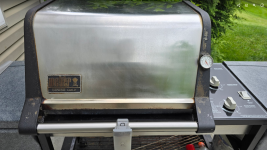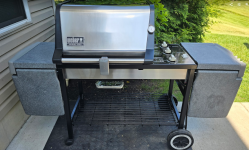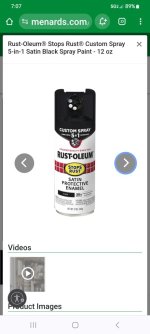Thank you Mark, yes only talking about the lid end caps. The first 2 times I removed all of the paint (disassembled, sand until shiny silver all around on the outside and the edge, not on the inside at all). Each time I cleaned with degreaser, dried in sun, then sprayed with Rustoleum HH Ultra (semi gloss). The first time I assumed it was too smooth, as I had sanded down to 120 grit. The second time I stopped at 320 to see if that would help. No primer of any kind, but I also didn't use brake cleaner or the like to clean, just degreaser, then iso alcohol (and tack cloth after). I felt like the coats were thin enough...approx 3 coats...and I cured for 1hr at 450 (ie, just the grill running, not in oven or anything like that). The paint seemed solid, but as noted it seems to start failing after a week or so (used multiple times). And, of course the top edge that touches the cover is now sticking to the cover, even though it didn't for the first few days. The grill is covered all day, but gets blasted by the sun in the summer where it sits, and gets very hot just sitting in the sun. I think I can find a solution for the cover. Perhaps I need to let the grill sit unused after painting, uncovered, for a few days. Gonna give this a third attempt next month when the family is gone and the grill is not in use.



